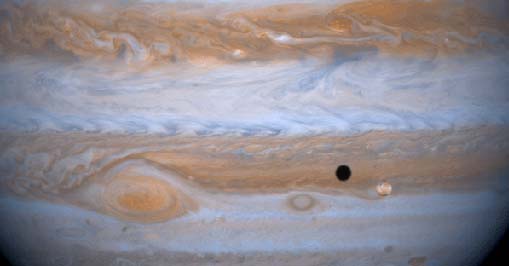Io's Interaction with Jupiter

Io, the closest of the Galilean moons of Jupiter, is about the size of Earth's moon but in relation to the planet's diameter, it is much closer to Jupiter. It's orbit at just 5.9 times the radius of Jupiter puts it in a region of intense magnetic field. It has a significant and unique effect on the magnetosphere of the planet.
Although all four of the large Galilean moons have some effect on the magnetosphere, Io's effect is much larger because of its intense volcanism. It is seen as a major source of the heavy ions in the inner charged particle region of the magnetosphere. The particles ejected by Io's volcanoes have interacted with the magnetic field of the planet to produce a ring of charged particles around the planet, following Io's orbit. It is referred to as the Io plasma torus. This torus is detectable from Earth, but it's origin was unknown until Voyager discovered the intense volcanic activity of Io. The Galileo spacecraft made detailed studies of the torus. The energetic charged particles in the torous make it an extremely high radiation area, lethal to either manned or unmanned space vehicles. Spectroscopic evidence of sulfur in the torus makes the volcanism of Io the likely source of the charged particles in it.
Jupiter Concepts
Solar System Illustration
Solar System Concepts
References
Chaisson & McMillan,
Ch 11.
| HyperPhysics********** Astrophysics | R Nave |